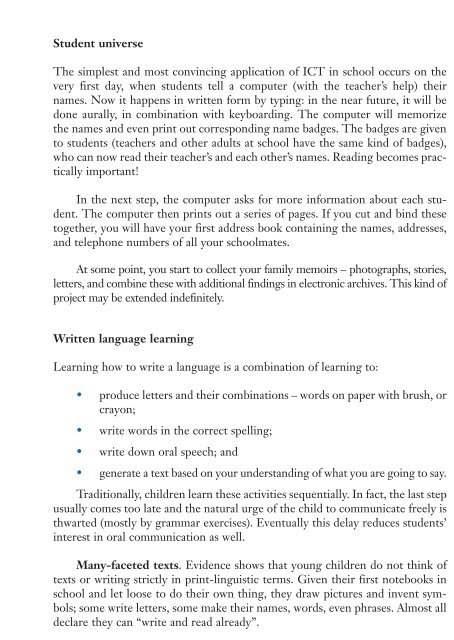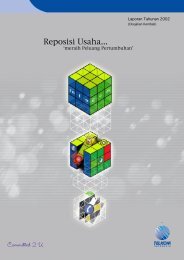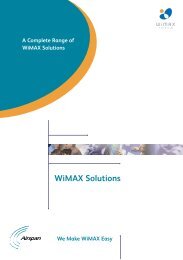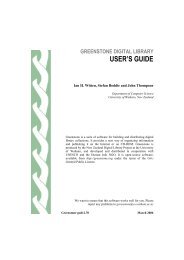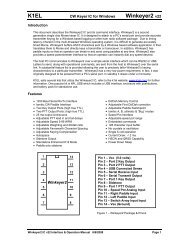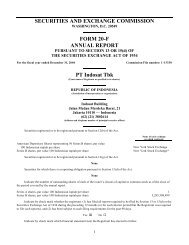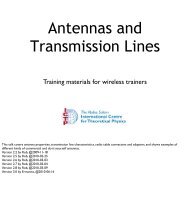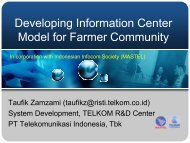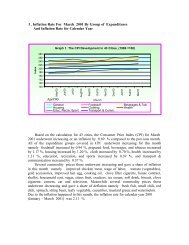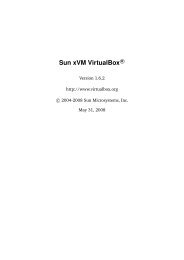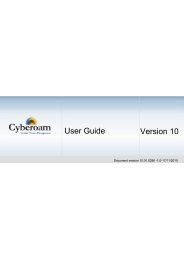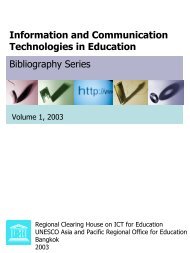Information and communication technologies in schools: a ...
Information and communication technologies in schools: a ...
Information and communication technologies in schools: a ...
You also want an ePaper? Increase the reach of your titles
YUMPU automatically turns print PDFs into web optimized ePapers that Google loves.
146<br />
ICT IN SCHOOLS<br />
A HANDBOOK FOR TEACHERS<br />
Student universe<br />
The simplest <strong>and</strong> most conv<strong>in</strong>c<strong>in</strong>g application of ICT <strong>in</strong> school occurs on the<br />
very first day, when students tell a computer (with the teacher’s help) their<br />
names. Now it happens <strong>in</strong> written form by typ<strong>in</strong>g: <strong>in</strong> the near future, it will be<br />
done aurally, <strong>in</strong> comb<strong>in</strong>ation with keyboard<strong>in</strong>g. The computer will memorize<br />
the names <strong>and</strong> even pr<strong>in</strong>t out correspond<strong>in</strong>g name badges. The badges are given<br />
to students (teachers <strong>and</strong> other adults at school have the same k<strong>in</strong>d of badges),<br />
who can now read their teacher’s <strong>and</strong> each other’s names. Read<strong>in</strong>g becomes practically<br />
important!<br />
In the next step, the computer asks for more <strong>in</strong>formation about each student.<br />
The computer then pr<strong>in</strong>ts out a series of pages. If you cut <strong>and</strong> b<strong>in</strong>d these<br />
together, you will have your first address book conta<strong>in</strong><strong>in</strong>g the names, addresses,<br />
<strong>and</strong> telephone numbers of all your schoolmates.<br />
At some po<strong>in</strong>t, you start to collect your family memoirs – photographs, stories,<br />
letters, <strong>and</strong> comb<strong>in</strong>e these with additional f<strong>in</strong>d<strong>in</strong>gs <strong>in</strong> electronic archives. This k<strong>in</strong>d of<br />
project may be extended <strong>in</strong>def<strong>in</strong>itely.<br />
Written language learn<strong>in</strong>g<br />
Learn<strong>in</strong>g how to write a language is a comb<strong>in</strong>ation of learn<strong>in</strong>g to:<br />
• produce letters <strong>and</strong> their comb<strong>in</strong>ations – words on paper with brush, or<br />
crayon;<br />
• write words <strong>in</strong> the correct spell<strong>in</strong>g;<br />
• write down oral speech; <strong>and</strong><br />
• generate a text based on your underst<strong>and</strong><strong>in</strong>g of what you are go<strong>in</strong>g to say.<br />
Traditionally, children learn these activities sequentially. In fact, the last step<br />
usually comes too late <strong>and</strong> the natural urge of the child to communicate freely is<br />
thwarted (mostly by grammar exercises). Eventually this delay reduces students’<br />
<strong>in</strong>terest <strong>in</strong> oral <strong>communication</strong> as well.<br />
Many-faceted texts. Evidence shows that young children do not th<strong>in</strong>k of<br />
texts or writ<strong>in</strong>g strictly <strong>in</strong> pr<strong>in</strong>t-l<strong>in</strong>guistic terms. Given their first notebooks <strong>in</strong><br />
school <strong>and</strong> let loose to do their own th<strong>in</strong>g, they draw pictures <strong>and</strong> <strong>in</strong>vent symbols;<br />
some write letters, some make their names, words, even phrases. Almost all<br />
declare they can “write <strong>and</strong> read already”.


